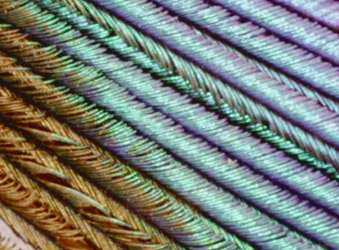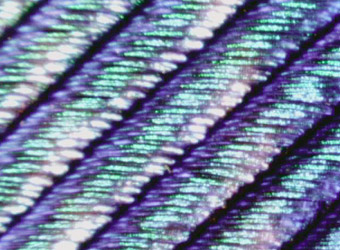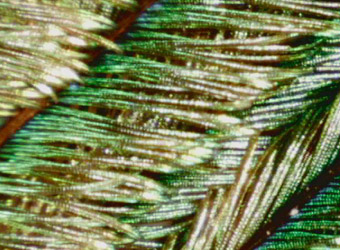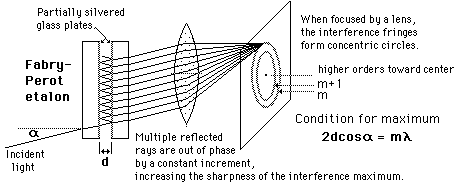 A peacock feather's colors are not solely derived from pigment, but are more likely driven by the structure of the feather.
A peacock feather's colors are not solely derived from pigment, but are more likely driven by the structure of the feather.This structure includes arrays on the barbules of the feather which are like twigs on the branches of the feather.

The figure on the right explains the different wavelengths measuring reflectivity in four regions of the peacock feather. The images below show the barbules at different magnifications to show variations in the filaments. Ultimately the difference we see is a result of reflections from the front and back of the feather structure acting like a Fabry-Perot interference (explained below) to enhance the color.
50x 100x 200x



Fabry-Perot Interferometer
This interferometer makes use of multiple reflections between two closely spaced partially silvered surfaces. Part of the light is transmitted each time the light reaches the second surface, resulting in multiple offset beams which can interfere with each other. The large number of interfering rays produces an interferometer with extremely high resolution, somewhat like the multiple slits of a diffraction grating increase its resolution.

read more here
No comments:
Post a Comment